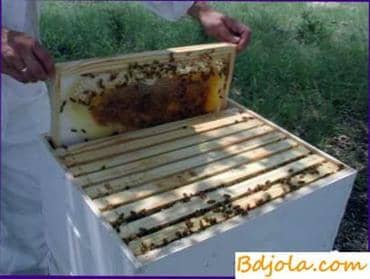
I solved this problem in the following way: from the wooden racks I made a skeleton for the sotohranilischa and cast it on the outside with iron. The storage consists of three sections of 500X450X1600 mm size, which are equipped with doors for convenience. Frames I strengthen on wooden bars in five rows. In each section of the honeycomb I place, depending on their further designation: for the withdrawal of the brood, the folding of the honey, the rejected ones, etc. I do not do any ventilation. I put the pile in an unheated room. At me it is usual ФЕУПЧЩК a shed.
I do not apply any chemical measures to combat moth. Against rodents I use chemical poisons, after which they disappear for a long time.
Make such a sotohranilische – and you get rid of troubles when storing honeycombs.
Сушилка для слив. Как почистить улей.
Storage of frames and fight with moths